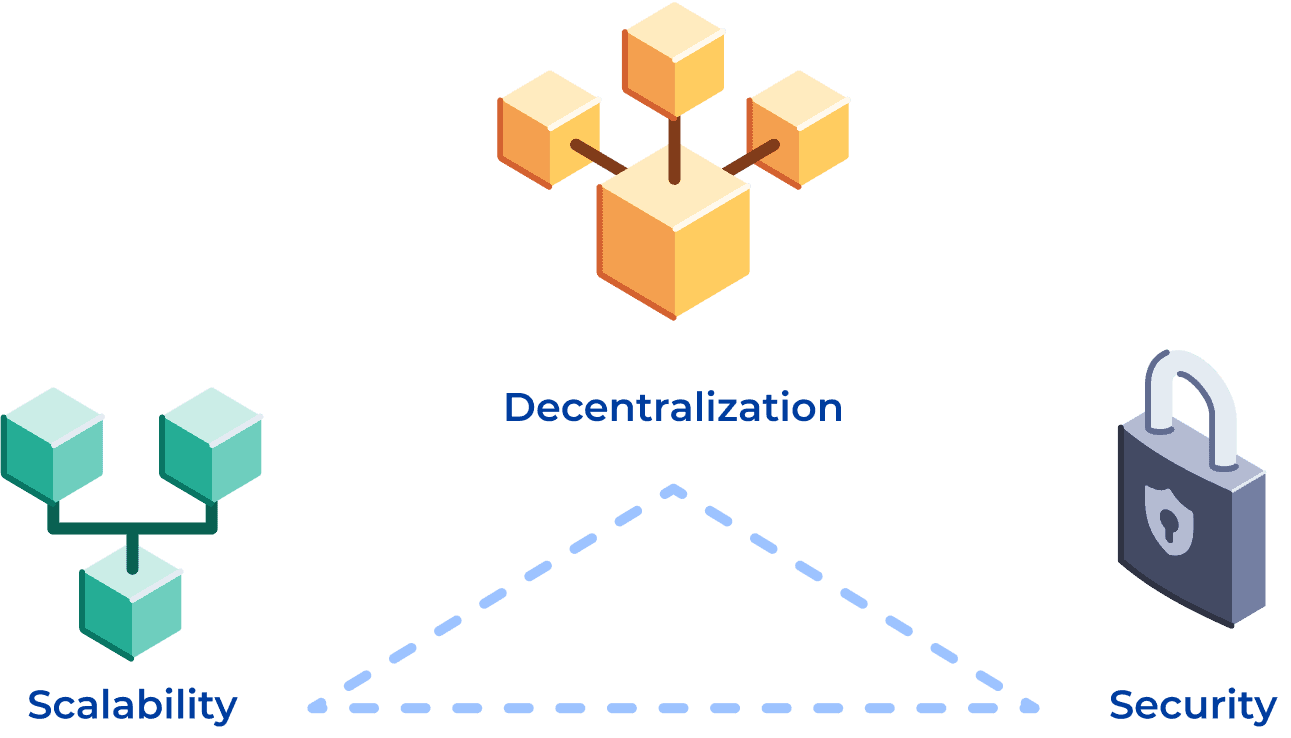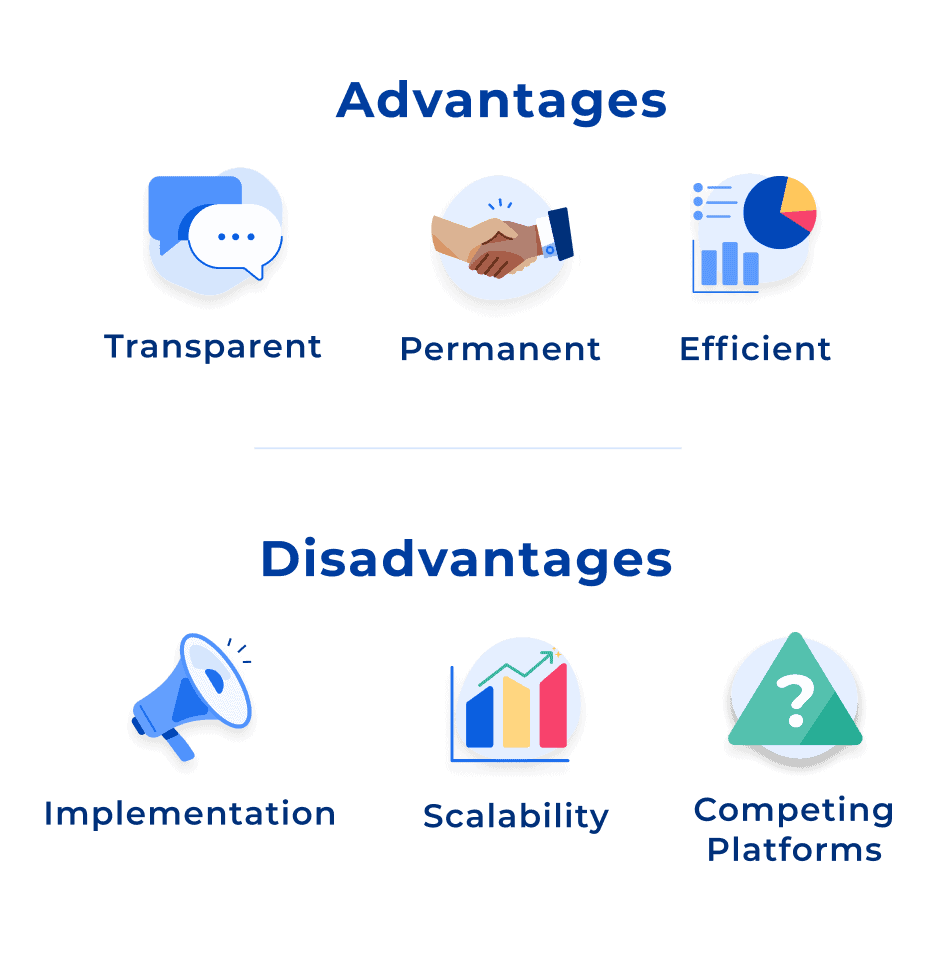NFTs. Smart Contracts. The metaverse. What do all these buzzwords have in common? Blockchain technology.
The popularity of blockchain projects is increasing every day, with the strong potential to take today’s institutions to new interaction environments. With numerous benefits for individuals and businesses, blockchain technology offers effective solutions for many of the problems organizations face today.
Higher education institutions are constantly adopting new models and systems to educate, lead, and ultimately, innovate. With one of the most traditional business models, educational institutions are dependent on information technology, and more importantly, the reliable transfer of information. By using blockchain technology, institutions can protect this model, and push to new boundaries.
Today, we’re breaking down why schools should consider adopting blockchain technology, and how they can embrace this new environment for learning.
Key Insights at a Glance
- With blockchain technology, participants can confirm transactions without the need for a central clearing authority.
- Some schools, including McMaster University and MIT, have adopted a certification new system, by issuing blockchain-based degrees to students with BlockCerts.
- Schools and government officials could have access to documentation in seconds and reduce student visa approval wait times for international students with NFTs.
What is Blockchain Technology?
Let’s start by breaking down what blockchain technology is, and how it works.
Blockchain is a shared, unchangeable digital ledger used to facilitate the process of recording transactions and tracking assets in a business network.1 Broken down further, an asset can be tangible (car, house, land) or intangible (intellectual property, patents, copyrights, branding).
Put simply, blockchain is a shared database that stores data which can be shared across a peer-to-peer network. So, anything of value can be tracked or traded on the blockchain network.
Why is Blockchain Technology Important?
Every organization runs on information, including higher education institutions. The more accurately this information can be presented, and the faster it can be transferred, the better.
That’s why Blockchain is an ideal network for the delivery of information. With instant, shared, and completely transparent information that is stored in an immutable ledger, blockchain ensures that network members can access information. This certifies that information can be transferred with end-to-end security and authenticity, eliminating room for error.
Organizational operations spend a lot of time and energy on keeping records and third-party validations. The centralization in these record-keeping systems means they are often vulnerable to fraud, error, and risk. This slows down operations, productivity, and ultimately success.
There’s a better way. A blockchain network has the power to track orders, payments, production, and so much more. Essentially, Blockchain supports the verification and traceability of multi-step transitions with built-in contract management and auditing.
Members on the network share the same single view of these products, ensuring that all details of a transaction can be seen end-to-end. As such, this gives members the confidence and assurance of transparency, and the opportunity for more efficient systems and processes.

With blockchain technology, participants can confirm transactions without the need for a central clearing authority. This presents numerous opportunities to address everyday problems.
Strong Use Cases for Institutions
The key benefits of blockchain technology can transform all sectors, especially education. With the changing nature of learning, schools and students are facing new challenges that call for a shift in our current systems. Blockchain development can support these changes.
Digital Documents
The pandemic was a challenging time for international students looking to study abroad. Schools and students were forced to adapt to virtual learning environments that presented the world with a unique opportunity to assess our current systems. Today, many schools have kept some of the adaptations that came out of the pandemic, including online learning and digital certificates.
Border restrictions and embassy closures across the world meant students were unable to attend schools abroad, and schools were forced to delay graduation celebrations. In this time, schools were forced to find a safe and reliable way to get students their degrees. Many schools opted to mail students physical copies of their certificates, proving to be an expensive and faulty system. Some schools, including McMaster University and MIT, have adopted a new certification system, by issuing blockchain-based degrees to students with BlockCerts.
So, how is this different from a digital degree? Blockchain-powered documents are read-only, meaning students and schools are unable to make changes to the document. This provides a secure and permanent certificate to students that is easily accessible and can live in the blockchain network immutably. More importantly, the technology provides an easily verifiable version of the student’s degree, diploma, or certificate that students can access at any time.
Emailing a school to authenticate an issued degree can be a lengthy process. In comparison, Blockchain technology gives students a one-time password that can be shared with employers in seconds. With an immutable ledger of chronological events, schools can use blockchain technology to verify and automate educational business transactions like transcripts, diplomas, credentials, and test scores.
Verifiable Documents
In September, the Government of Canada conducted an investigation into the use of blockchain to authenticate data from the Statistics Canada website. This investigation was prompted by the question, “Do you know what a non-fungible token (NFT) is?”
Blockchain can be used to record or transfer the ownership of assets, using digital assets like non-fungible tokens (NFTs). Basically, an NFT is a representation of ownership for a unique asset that is secured on blockchain. These assets are not interchangeable and can be linked to both digital and physical entities. Essentially, NFTs work as a digital certificate of authenticity that represents ownership to a particular asset.
This means that documents can be stored and tracked with ease, making NFTs a strong use case for storing and sharing student records. By storing student records on the blockchain, students and schools can easily transfer records to different schools, and can be viewed at any time.
By design, NFTs are automatically verifiable and authenticated with blockchain development. This means that schools and government officials could have access to documentation in seconds and reduce student visa approval wait times for international students with NFTs. One of the most common reasons for Canadian student visa refusal can be overcome by document verification.
From 2019 to 2021, in 26% of refusal cases, IRCC was not satisfied that the applicant would leave Canada at the end of their stay on the basis of their personal assets and financial status. By housing student documents on the blockchain using NFTs, government officials could have easy access to a student’s financial records. This way, students can prove that they have the financial means to support themselves in Canada, reducing wait times for student visa approvals.
Safe Transfer of Funds
Schools are one the the first places that students learn how to manage large financial transactions, with minimal financial education. Students are expected to know how to apply for financial aid, transfer funding, manage interest rates and pay off student debt. However, for international students, navigating these steps can be especially challenging.
According to the World Bank’s research, 1.7 billion people over the age of 15 live without bank accounts. Blockchain transactions can help international students make global financial transactions in minutes at a small fee, without the need for bank accounts or financial intermediaries. Basically, as long as students have access to the internet, they can make financial transfers.
With blockchain technology, students can manage their funds in one network, with full transparency. By removing the need for intermediaries to confirm transactions between two parties, blockchain development can issue financial transfers in seconds. Compared to traditional financial institutions, these transactions are made at lower rates. Accordingly, this provides institutions with the opportunity to present immediate funding in a secure manner.
This year, the American dollar reached a generational high in strength, impacting both students and destination markets. By transferring digital currency funds using cryptography to secure transactions, students and schools can advance a more universally accessible currency.
Educational institutions and government entities can utilize blockchain technology for secure and verifiable funding transactions. This includes scholarships, loans, bursaries, and fees across the world. Overall, Blockchain development can make these transactions more accessible for international students, without the impact of currency exchanges.
Pros, Cons and Considerations for Blockchain Technology
What is an advantage of using Blockchain technology? Aside from verifiability and authenticity, a major advantage to using blockchain technology is the accuracy of transactions.2 Basically, all blockchain transactions are verified by multiple nodes to reduce error. If a node is missing in the blockchain network or invalidates a transaction, other nodes would be able to see the difference, and catch the error.3
In comparison, traditional databases are dependent on revision processes that often go unnoticed. On the blockchain ledger, every asset is designed to be individually identified and tracked. This ensures that transactions are accurate and unmodifiable. Also, this protects users against fraudulent transactions, with strict verification methods to prevent the entry of forged transactions.
Blockchain development also allows for more efficient transfers, as a network that operates 24/7. As a result, users can make efficient financial transactions, including the transfer of assets, internationally. Unlike other financial institutions, users can make global transactions, without having to wait days for confirmation.

On the downside, as a newer database, there are constant changes to how blockchain technology works. With the right evolution of blockchain development, there will be new ways to solve scalability issues and find ways that make the blockchain network more feasible. However, these solutions are still immature compared to centralized systems.
Overall, scalability is one of the most common bottlenecks to adopting blockchain. Compared to traditional databases, blockchain development is costlier to implement. Hence, organizational structures would need to invest in planning and execution to successfully integrate blockchain in their process. Although blockchain can reduce costs once implemented, the upfront cost of integrating blockchain development can be an adoption barrier.
Looking Forward
Will the future of learning in higher education take place on the blockchain? International education continues to make great strides, with EdTech playing a key role in these achievements. However, there is still a long road ahead.
Numerous institutions across the globe are learning and teaching blockchain education, not only financially but also technically. Schools like George Brown College and York University are working to not only benefit from blockchain technology, but ensure that blockchain development programs can be accessible to everyone.
Keeping up with change is an essential part of growth. That’s why, various sectors, including healthcare, manufacturing and retail, are adapting to new environmental changes with the onset of economic uncertainty.
Many institutions are looking to innovative technologies like Blockchain to transform everyday problems. Here are a few things for schools to keep in mind as they try to stay ahead of the curve:
- Invest in Education. Blockchain is growing globally. Let’s do our part to make digital financial education more accessible and affordable for students.
- Assess the long-term cost benefits. Each organization has different needs and capacities. Is investing in blockchain worth the potential benefits for you?
- Talk to your team. Facilitate internal surveys to understand if blockchain technology is something that your team understands and is excited about.
Subscribe to ApplyInsights
Sign up for the latest insights on international education.

About the ApplyInsights Team
FOOTNOTES:
1. Harvard Business Review. The Truth about Blockchain.
2. Forbes Advisor. What is Blockchain? July 22, 2022.
3. Blockchain Council. What are Blockchain Nodes? September 9, 2022.



